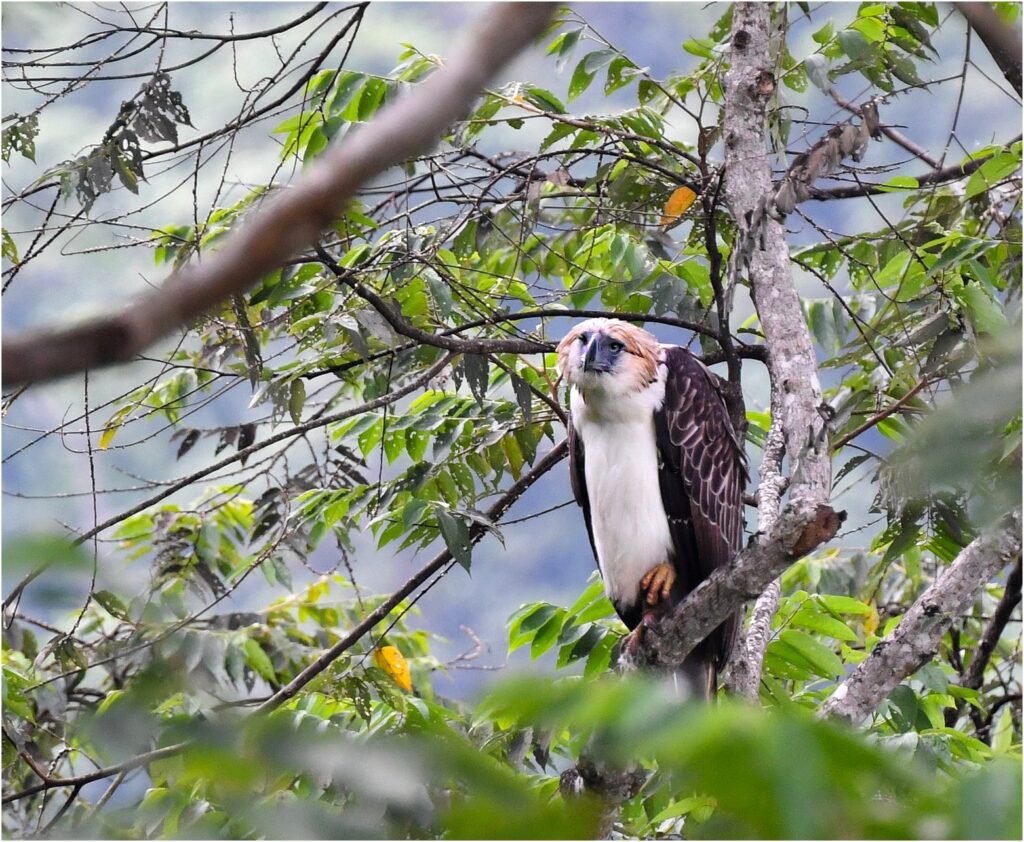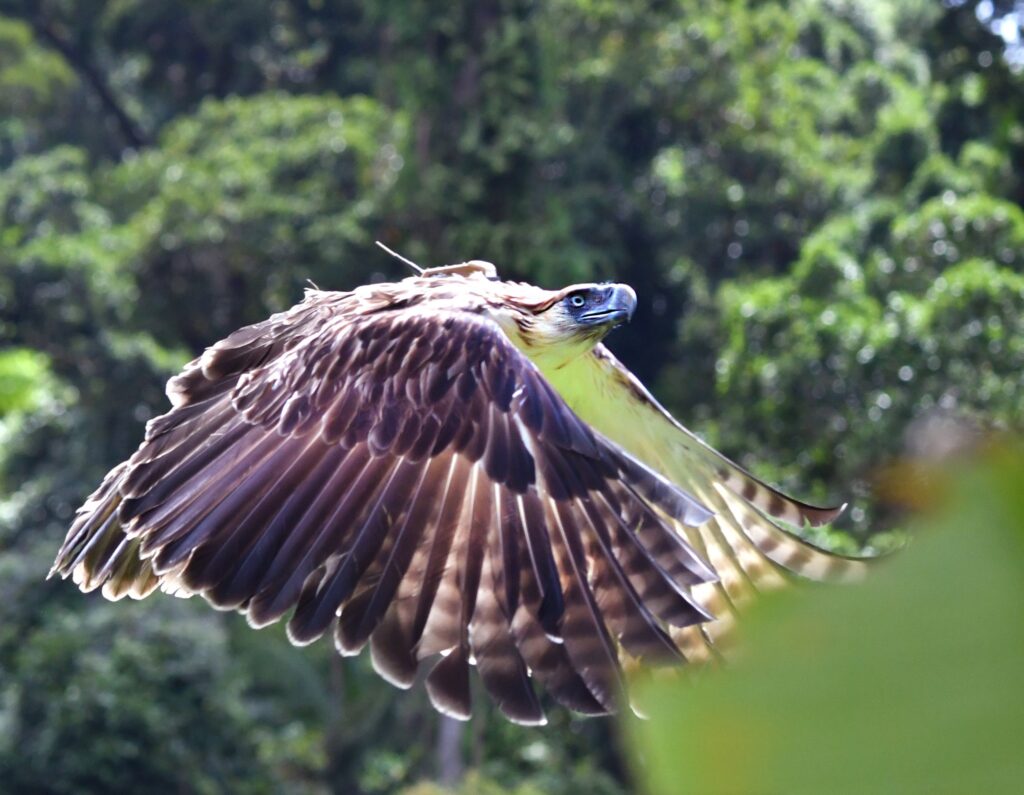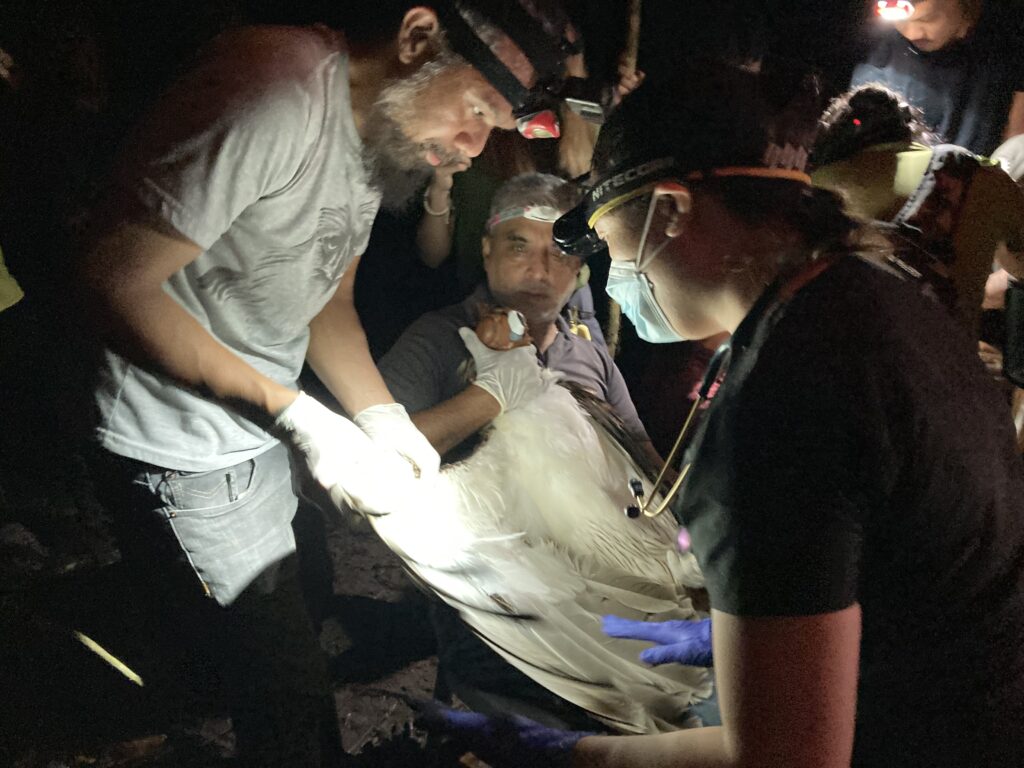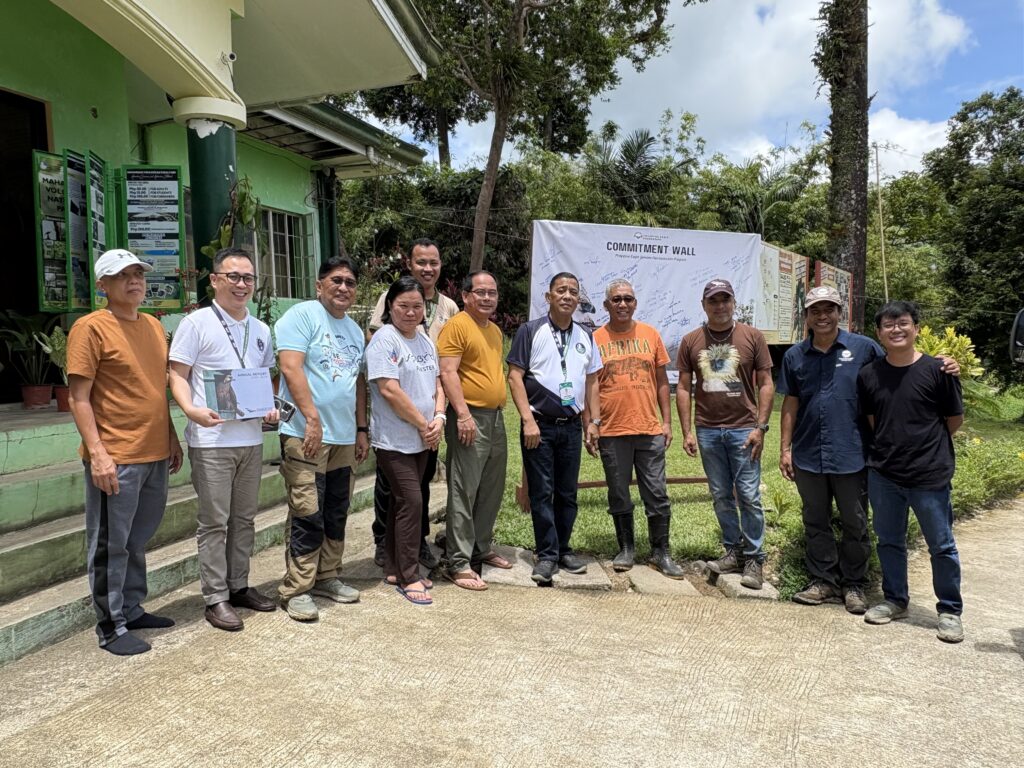On May 8, 2025, the remote forests of Leyte echoed with the powerful wingbeats of two Philippine Eagles as they were released back into the wild – a historic moment for Philippine conservation. The Philippine Eagle Foundation (PEF), in partnership with the Department of Environment and Natural Resources (DENR) and the Mohamed bin Zayed Raptor Conservation Fund (MBZRCF), set free a male eagle Kalatungan 1 and a female Lyra “Sinabadan” in the Anonang-Lobi mountain range of Barangay Kagbana, Burauen. This release is part of an ambitious species reintroduction program aiming to restore a breeding population of the critically endangered national bird in Leyte’s forests, where the species had vanished for over a decade following the devastation of Super Typhoon Yolanda in 2013. Conservationists hailed the event as a major milestone, building on lessons learned from the previous year’s trial reintroduction and giving hope that Philippine eagles may once again soar permanently over Leyte.

image 1. The male eagle – Kalatungan 1 takes flight once the hack cage opens
Rescued Eagles Return After Rehabilitation and “Hacking” Acclimatization
The two eagles released – Sinabadan, an 11-year-old female, and Kalatungan 1, a 3-year-old male – each have a remarkable backstory of survival. Both birds originated from Mindanao and were rescued after sustaining injuries at the hands of humans. Sinabadan was found trapped by locals in Bukidnon province (having hatched in the wild in Davao) and needed care, while Kalatungan 1 was discovered emaciated with a gunshot wound in Pangantucan, Bukidnon. They underwent long-term rehabilitation at the Philippine Eagle Center in Davao City, where veterinarians and experts nursed them back to health and prepared them for a return to the wild.
Before release, PEF transferred the pair to Leyte and placed them in a remote “hacking” aviary at the edge of Kagbana’s forests on March 21. There, the eagles spent roughly six weeks in acclimatization, getting gradually accustomed to the sights and sounds of their new habitat with minimal human contact. Inside this enclosed forest hideaway, they could exercise their wings and develop hunting instincts while staff closely monitored their behavior – from food responses and flight strength to alertness and avoidance of humans. This soft-release method ensured that by the time the cage doors opened, Sinabadan and Kalatungan were in prime condition and psychologically ready to fend for themselves. Both birds were even fitted with tiny GPS transmitters before release, enabling biologists to track their movements and survival in the coming months.
At 9:32 a.m. on release day, Kalatungan 1 was the first to hop to freedom, stretching his wings and taking flight above the canopy of Anonang-Lobi range. About half an hour later, Sinabadan followed suit, soaring out of the hack cage and gliding to a nearby tree before disappearing into the lush greenery. It was a poignant sight for the team on the ground – two rehabilitated “sky monarchs” of the Philippines returning where they belong. PEF Executive Director Dennis Salvador expressed optimism that the birds would thrive in their new home after the careful preparations. Veterinarians had given both eagles a final health check earlier in the week to certify they were fit for release, capping off the extensive rewilding process.

image 2. A Philippine eagle in the wild
Cohort Bonding and Site Fidelity: A New Protocol to Boost Survival
This Leyte release was especially noteworthy for its science-driven approach. The PEF employed a “cohort bonding” strategy – keeping Sinabadan and Kalatungan together as a pair from the moment of translocation – to encourage the birds to bond with each other and with the release site before they ever took off into the wild. By forming a natural pair (or cohort) in captivity and releasing them simultaneously, conservationists aim to foster strong site fidelity (loyalty to the release area) and reduce the likelihood of the eagles straying far away. “Socially bonded eagles Lyra Sinabadan and Kalatungan 1 will surely increase their loyalty to one another and their release site as their future breeding territory,” explained Dr. Jayson Ibañez, PEF’s Director for Research and Conservation Operations. In other words, a bonded pair is expected to stay and establish a territory around the familiar hacking site, improving their chances of survival and, eventually, breeding.
This adaptive technique was developed after learning hard lessons from the first-ever Philippine eagle release on Leyte last year. On June 28, 2024, PEF made history by translocating a pair of eagles – “Uswag” (an immature male) and “Carlito” (an adult female) – from Mindanao to the same Leyte range. While Carlito adjusted well and remains thriving in Leyte’s forests, the younger Uswag wandered too far from the release site and tragically drowned in the sea a month later. That loss underscored the risks of dispersal when a solitary eagle is released into unfamiliar terrain. Determined to prevent another such tragedy, PEF scientists and international raptor experts devised a “modified soft-release technique” for 2025, based on global best practices with related eagle species. Key to this approach is releasing a cohort-bonded pair: Sinabadan (a mature female) and Kalatungan (a juvenile male) were introduced to each other as companions in the hacking aviary, forming a close bond but not immediately mating. As the younger male matures, the friendship can blossom into a breeding partnership in the wild. This groundbreaking strategy – dubbed the Philippine Eagle Bonding Experiment – is designed to encourage natural pair formation and effectively anchor the birds to their new habitat for the long term. Early indications are promising, as both eagles have remained in the vicinity since release and continue to be monitored by radio/GPS tracking and field observations.

image 3. Carlito, one of the tracked eagles released in 2024 is still thriving in the wild
Community Guardians and Collaborative Support on the Ground
Another pillar of this reintroduction’s success has been the strong involvement of the local community in Barangay Kagbana. The release site lies within the Mahagnao Volcano Natural Park area, and residents of Kagbana have embraced the role of stewards of their forest. In the weeks leading up to the release, local leaders, volunteer forest guards, and community members worked with PEF to secure and prepare the area. They helped improve the habitat’s safety – watching for potential poachers, ensuring no disturbances near the hack cage, and conducting awareness campaigns so that villagers understand the importance of protecting the eagles. PEF has repeatedly credited Kagbana’s community for its genuine care for the eagles’ welfare and the forest ecosystem. This grassroots support is critical: with villagers as vigilant guardians of the eagles’ new territory, the birds have a much better chance of surviving and eventually nesting in the wild. “Our community takes pride in being part of this conservation story. We will do our best to keep these eagles safe,” said Barangay Captain Renato Gabane in the local Waray-waray dialect, as recounted by PEF field staff. (This quote is a paraphrase for illustrative purposes.)
The Philippine Eagle reintroduction program in Leyte is truly a team effort that spans local and global stakeholders. The Mohamed bin Zayed Raptor Conservation Fund (MBZRCF) – an Abu Dhabi-based philanthropy dedicated to raptor conservation – provided key funding and expertise that made the multi-year program possible. In fact, Dr. Munir Virani, MBZRCF’s Chief Operating Officer, flew in from Abu Dhabi to personally witness the May 8 release, underscoring the Fund’s deep commitment to the project. “Supporting this historic effort to restore Philippine eagles in Leyte is a source of great pride for us,” Dr. Virani said afterward. “It’s a shining example of science-based, adaptive conservation in action – using evidence-backed strategies and working hand-in-hand with local communities to give these magnificent raptors the best chance at a comeback.” The MBZRCF’s support, alongside contributions from other partners like Insular Life and the provincial and municipal governments, has been repeatedly acknowledged as vital to the program’s success. Their backing enabled everything from field research and community outreach to the construction of the hacking cages and the satellite tracking technology.

image 4. The team from the PEF and MBZRCF conduct a health check on one of the eagles prior to release
Hope Soars for the Philippine Eagle in Leyte
With Sinabadan and Kalatungan 1 now adjusting to freedom in Leyte, conservationists are optimistic that this carefully managed reintroduction will jumpstart the return of a self-sustaining Philippine Eagle population on the island. The ultimate vision is for these released eagles to survive and eventually breed, establishing a new generation of Philippine eagles in a province where none have been recorded in recent years. If successful, it would mark a significant step toward securing the future of this critically endangered species, often dubbed the “Haribon” or bird-king, which has fewer than 400 pairs left in the wild nationwide.
The journey is far from over – PEF plans to release additional eagles in Leyte over the coming years to bolster the chances of forming breeding pairs. Every eagle reintroduced brings new insights, and the program will continue to adapt based on what is learned from Sinabadan and Kalatungan’s experience. For now, though, the sight of these two majestic eagles soaring once again in Leyte’s skies is a powerful symbol of hope. It is a testament to what science-based conservation and collaborative partnerships can achieve: from a devastating typhoon that wiped out Leyte’s eagles, to a community-driven effort that is helping bring them back. “This is how we restore nature – one eagle at a time,” Dr. Virani observed. As the world watches these iconic raptors reclaim their ancestral range, the people of Leyte and their partners stand proud, knowing they have given wings of hope to a species and an ecosystem in need.

image 5. Officials from the DENR, local community and the PEF pose for a photograph after the release
Sources:
- Philippine Daily Inquirer – “Philippine eagle pair released in forests of Leyte” (May 8, 2025)
- SunStar Davao – “2 PH eagles released in Leyte” (May 11, 2025)
- MindaNews – “3 Philippine eagles brought to Leyte for release into the wild” (March 22, 2025)
- Philippine Daily Inquirer – “2 more Philippine eagles released into Leyte forests” (May 8, 2025)
- All photos by Munir Virani